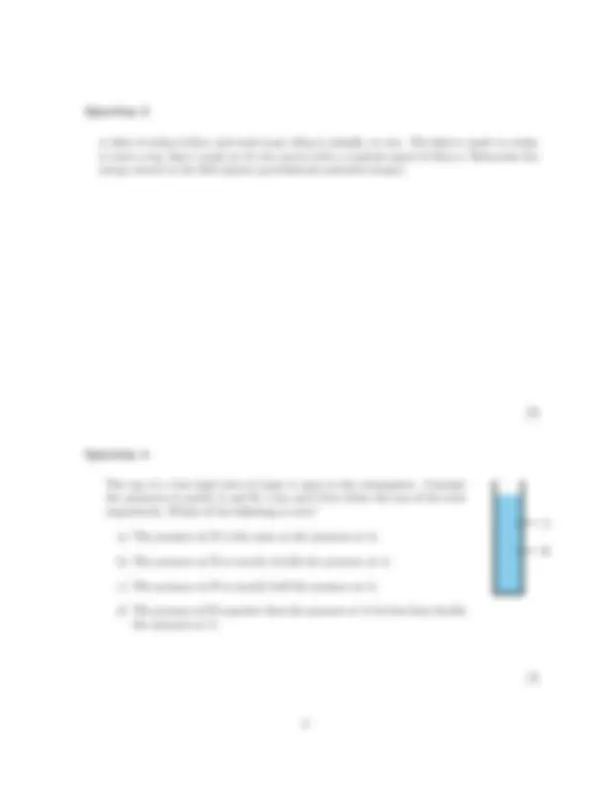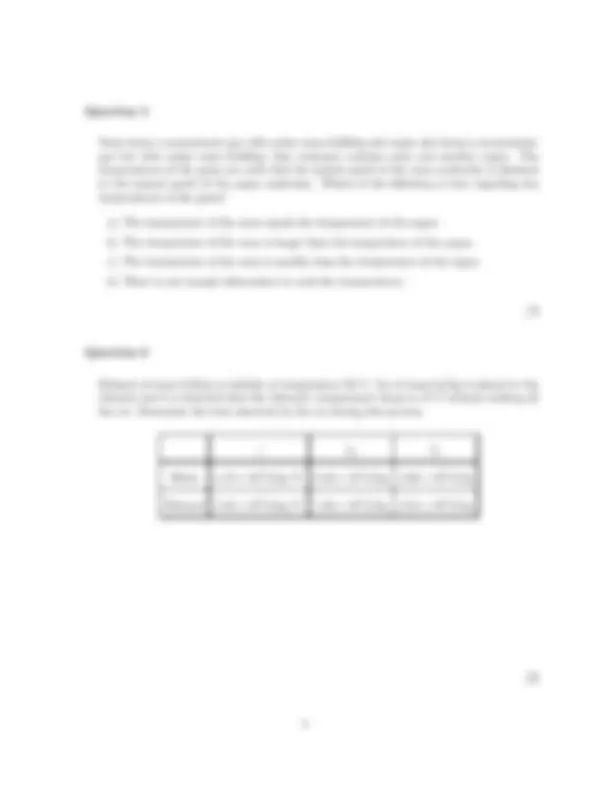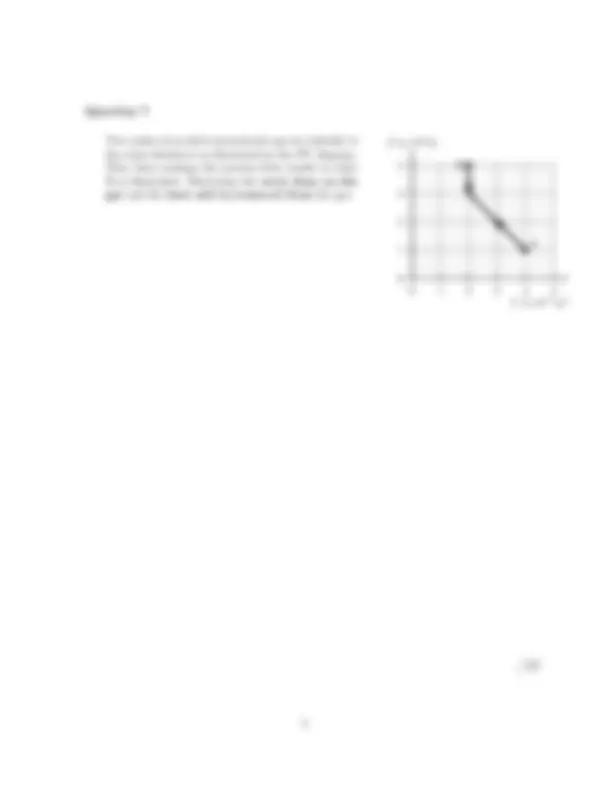





Study with the several resources on Docsity

Earn points by helping other students or get them with a premium plan


Prepare for your exams
Study with the several resources on Docsity

Earn points to download
Earn points by helping other students or get them with a premium plan
Community
Ask the community for help and clear up your study doubts
Discover the best universities in your country according to Docsity users
Free resources
Download our free guides on studying techniques, anxiety management strategies, and thesis advice from Docsity tutors
The fall 2007 exam for general physics i at the university of california, berkeley. The exam covers topics such as moment of inertia, forces, energy, and ideal gases. Students are required to show their reasoning and calculations for each question.
Typology: Exams
1 / 5

This page cannot be seen from the preview
Don't miss anything!




Phys 111 Fall 2007
16 November 2007
g = 9.81 m/s R = 8.314 J/mol K NA = 6. 02 × 10 −^23 /mol
kB = 1. 38 × 10 −^23 J/K Patmos = 1. 01 × 105 Pa TC = T + 273. 15 TF = 95 TC + 32
Moment of inertia: solid disk I = 12 mr^2 Moment of inertia: hoop I = mr^2
ρwater = 1. 0 × 103 kg/m^3
A ball attached to a string initially swings in a hor- izontal circle with a constant angular speed. The string is adjusted in such a way that the ball swings with a faster constant angular speed without chang- ing the tension in string. Which of the following must be true?
a) The length of the string was not changed. b) The string was shortened. c) The string was lengthened. d) It is impossible to get the ball to swing at a faster angular speed without changing the tension in the string.
A meter stick is free to pivot about its midpoint. A block of mass 2 kg is suspended 0.25 m to the left of the midpoint. A string is attached 0.20 m to the right of the midpoint and makes an angle of 45◦^ beneath the meter stick. The force on the string is adjusted so that the meter stick is stationary in a horizontal position. Determine the magnitude of the force exerted by the string.
b
0 .25 m
2 kg
0 .20 m
/
Neon forms a monoatomic gas with molar mass 0.020 kg and argon also forms a monoatomic gas but with molar mass 0.040 kg. One container contains neon and another argon. The temperatures of the gases are such that the typical speed of the neon molecules is identical to the typical speed of the argon molecules. Which of the following is true regarding the temperatures of the gases?
a) The temperature of the neon equals the temperature of the argon. b) The temperature of the neon is larger than the temperature of the argon. c) The temperature of the neon is smaller than the temperature of the argon. d) There is not enough information to rank the temperatures.
/
Ethanol of mass 0.25 kg is initially at temperature 50◦^ C. Ice of mass 0.2 kg is placed in the ethanol and it is observed that the ethanol’s temperature drops to 0◦^ C without melting all the ice. Determine the heat absorbed by the ice during this process.
c Lf Lv
Water 4. 18 × 103 J/kg·◦C 3. 33 × 105 J/kg 2. 26 × 106 J/kg
Ethanol 2. 44 × 103 J/kg·◦C 1. 04 × 105 J/kg 8. 54 × 105 J/kg
/
Two moles of an ideal monoatomic gas are initially in the state labeled A as illustrated in the PV diagram. They then undergo the process that results in state B as illustrated. Determine the work done on the gas and the heat add to/removed from the gas.
P in 10^5 Pa
V in 10−^3 m^3
/